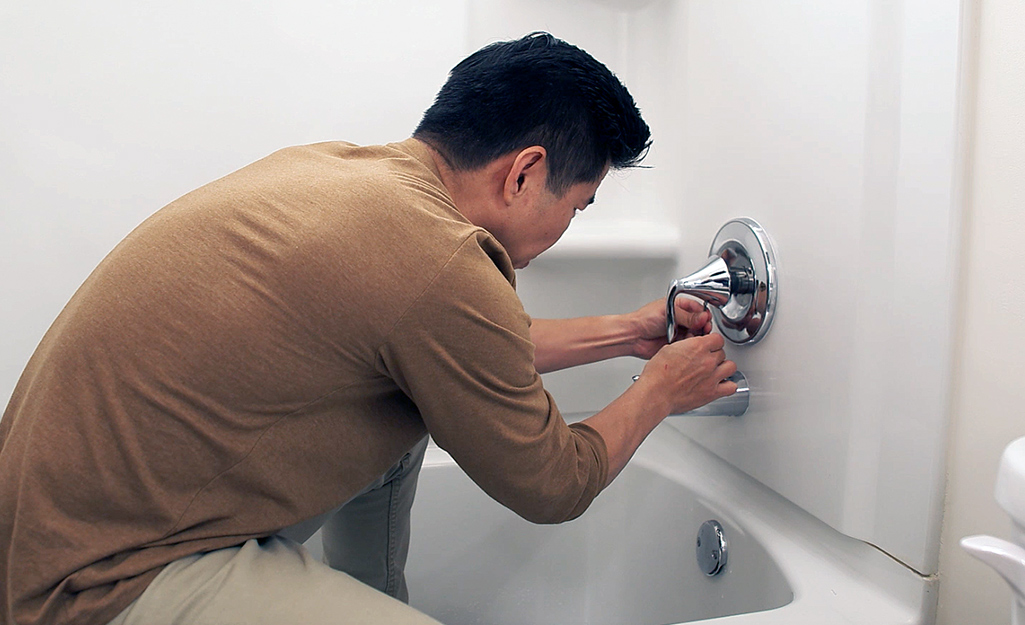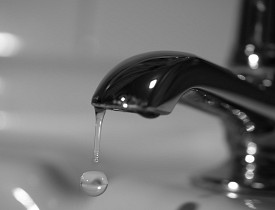When It's Crucial to Mend a Faulty Faucet
When It's Crucial to Mend a Faulty Faucet
Blog Article
What're your thoughts and feelings on Why Are My Faucets Dripping (And Can I Fix It Myself)??

Leaking taps could seem like a minor hassle, however their effect exceeds simply the aggravation of the audio. From drainage to sustaining unneeded economic costs and health risks, ignoring a trickling tap can bring about numerous repercussions. In this post, we'll explore why it's essential to address this typical house concern quickly and successfully.
Wastefulness of Water
Environmental Impact
Dripping faucets contribute considerably to water waste. According to the Environmental Protection Agency (EPA), a single tap dripping at one drip per secondly can lose more than 3,000 gallons of water per year. This not only strains water resources but additionally impacts environments and wildlife depending on them.
Step-by-Step Guide to Fixing a Dripping Tap
Tools Needed
Before trying to fix a leaking tap, gather the needed tools, including a flexible wrench, screwdrivers, replacement components (such as washers or cartridges), and plumber's tape.
Usual Faucet Issues and Their Solutions
Determine the sort of tap and the particular problem creating the drip. Usual problems include worn-out washers, corroded valve seats, or malfunctioning O-rings. Describe manufacturer instructions or on the internet tutorials for step-by-step guidance on repair work.
Financial Expenses
Enhanced Water Expenses
Beyond the environmental impact, dripping faucets can pump up water bills substantially. The built up wastage over time converts right into higher utility costs, which could have been avoided with timely repair work.
Possible Property Damage
Moreover, prolonged dripping can cause harm to components and surfaces surrounding the faucet. Water build-up can cause discoloration, deterioration, and also architectural concerns if left neglected, leading to extra repair service expenses.
Health Concerns
Mold And Mildew and Mold Development
The continuous visibility of moisture from a trickling tap produces a suitable atmosphere for mold and mold growth. These fungis not only endanger indoor air top quality however likewise pose health and wellness risks, especially for people with breathing problems or allergic reactions.
Waterborne Diseases
Stagnant water in trickling taps can become a breeding place for microorganisms and other microorganisms, raising the threat of waterborne diseases. Pollutants such as Legionella germs grow in stationary water, potentially causing significant illnesses when ingested or inhaled.
DIY vs. Specialist Repair
Benefits and drawbacks of Do It Yourself Fixing
While some might try to repair a dripping faucet themselves, do it yourself repair work come with their very own collection of difficulties. Without proper expertise and devices, DIY efforts can worsen the issue or bring about incomplete fixings, extending the problem.
Advantages of Working With a Professional Plumber
Employing a specialist plumber guarantees that the underlying cause of the dripping faucet is attended to properly. Plumbings possess the experience and tools to diagnose and fix tap concerns successfully, conserving time and decreasing the threat of more damages.
Ecological Obligation
Individual Contribution to Preservation
Taking duty for dealing with trickling taps lines up with broader efforts toward water conservation and ecological sustainability. Every person's actions collectively make a substantial influence on protecting precious sources.
Sustainable Living Practices
By focusing on prompt fixings and taking on water-saving practices, individuals contribute to sustainable living practices that benefit both existing and future generations.
Preventive Measures
Regular Maintenance Tips
To stop trickling taps, execute regular upkeep such as cleaning aerators, inspecting for leakages, and changing worn-out components immediately. Additionally, take into consideration installing water-saving tools or upgrading to a lot more reliable fixtures.
Value of Prompt Repairs
Resolving dripping faucets as soon as they're observed protects against further water waste and prospective damages, inevitably conserving both water and cash in the future.
Impact on Building Worth
Understanding of Well-Maintained Property
Maintaining a residential property in good condition, consisting of dealing with maintenance concerns like trickling faucets, enhances its regarded worth and value among possible purchasers or lessees.
Impact on Resale Value
Qualities with well-maintained plumbing components, consisting of faucets, command greater resale worths in the real estate market. Attending to dripping faucets can add to a favorable impression during residential property inspections and arrangements.
Final thought
Resolving a dripping faucet goes beyond mere benefit; it's a necessary action toward saving water, lowering financial expenses, and securing wellness and residential or commercial property. Whether via DIY repair work or expert help, doing something about it to deal with dripping faucets is a small yet impactful way to promote responsible stewardship of resources and contribute to a healthier, more sustainable future.
How to Fix a Leaky Faucet: Step-by-Step Repair Guide
A leaky faucet may seem like a simple annoyance, but if it's not fixed promptly, that leak could cost hundreds to potentially thousands. From water damage to mold, mildew, and high water bills, even a tiny leak can be catastrophic if left unattended. Damage like this can even affect the overall value of your home, so it's important to take the right approach for leaky faucet repair. You may need the help of a plumber in some cases, but we've got a few tips you can try on how to fix a leaky faucet before calling the pros.
Four Faucet Types
When you're learning how to fix a leaky faucet, the first step is knowing what kind of faucet you're working with! There are four common types.
Cartridge Faucets
Cartridge faucets come in one- or two-handled varieties. In one-handled cartridge faucets, hot and cold water combines in a single cartridge. In the two-handled versions, hot and cold water are controlled separately and mixed in the faucet.
Ball Faucets
Ball faucets have a single lever you push up and down to adjust the pressure and rotate to change the temperature. A slotted metal ball controls the amount of water allowed into the spout.
Compression Washer Faucets
They're the oldest type of faucet, but they're still used in many homes — especially older ones. Compression faucets have two separate handles that, when turned, raise or lower the washer that seals a water valve. This valve stops water from flowing through the faucet when it is turned off.
Disc Faucets
Disc faucets rarely need to be repaired due to their maintenance-free design. The water flow is controlled by two discs — the upper one raises and lowers against a fixed lower disc, creating a watertight seal. If your disc faucet starts leaking, you may need to replace the seals or clean residue buildup from the inlets.
Fixing a Leaky Faucet
Step 1: Turn Off the Water
Whether you're learning how to fix a leaky bathtub faucet or how to fix a leaky kitchen faucet, always turn off the water supply to your working area when you're fixing a leak. The last thing you want is a flood added to your list of things to fix.
Look for the shutoff valves below your sink or around the tub and turn them clockwise to stop the water flow. If your faucet doesn't have shutoff valves, you may need to turn off the water for the whole house. Check to make sure it's off by turning the faucet on. If nothing comes out, you're ready to start the repair.
Step 2: Take Apart the Faucet
How you disassemble your faucet depends on the type of fixture you have. You can use a flathead screwdriver to remove the caps on top of the handle or handles for cartridge and compression faucets. Inside, you should see handle screws. Unscrew these with a screwdriver to remove the handle.
Disc- and ball-style faucets will typically have an inlet screw near the handle, and removing that will reveal the interior of the faucet.
Detach the Valve Stem
For cartridge- and compression-style faucets, you'll see the inner valve stem or cartridge once you remove the faucet handles. If you have a compression faucet, unscrew the brass valve stem. If you have a cartridge faucet, pull out the cartridge. If your cartridge has been in place for a while, it may require some tools or extra force to remove it due to mineral deposits.
Examine and Replace Parts
Once you've removed the parts, check them out to confirm what needs to be replaced. You may see corroded rubber washers, O-rings, stems, or cartridges. On a ball-style faucet, check the seats and springs for damage.
If you need to repair a leaky disc faucet, check the inlet and seals on the lower disc.
Once you determine what parts must be replaced, visit your local hardware store. Bring the damaged parts with you to ensure you can purchase the correct components to replace them.
Clean Valves and Faucet Cavity
If you've removed a stem or cartridge, you may notice mineral buildup in the faucet's threads. Use white vinegar to clean the valve seat by soaking it for a few minutes, then scrub it away with a soft toothbrush and rinse with warm water. You can also clean the interior of the faucet in the same way.
Reassemble the Faucet
Once your faucet is cleaned and the required parts have been replaced, it's time to reassemble it. Put the pieces back together and slowly turn the water supply back on. Doing this slowly is crucial because too much initial water pressure can damage the new hardware you've just installed.
https://homewarranty.firstam.com/blog/how-to-fix-leaky-faucet

Hopefully you enjoyed our topic on How to Fix a Dripping or Leaky Faucet . Thanks so much for finding the time to read through our blog. Sharing is good. Who knows, you may be helping someone out. I appreciate your readership.
Report this page